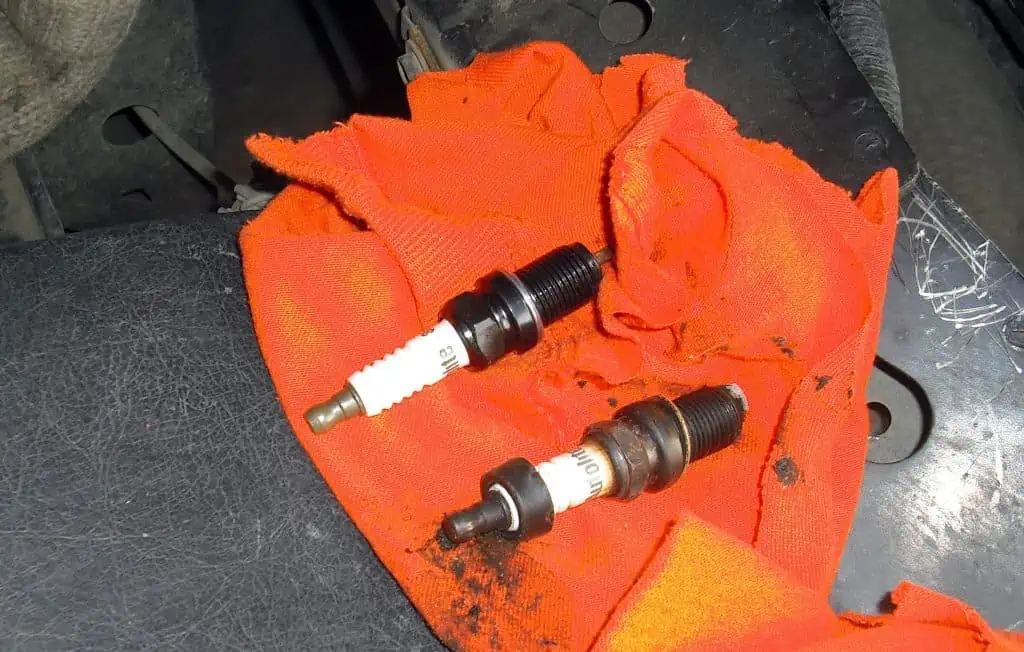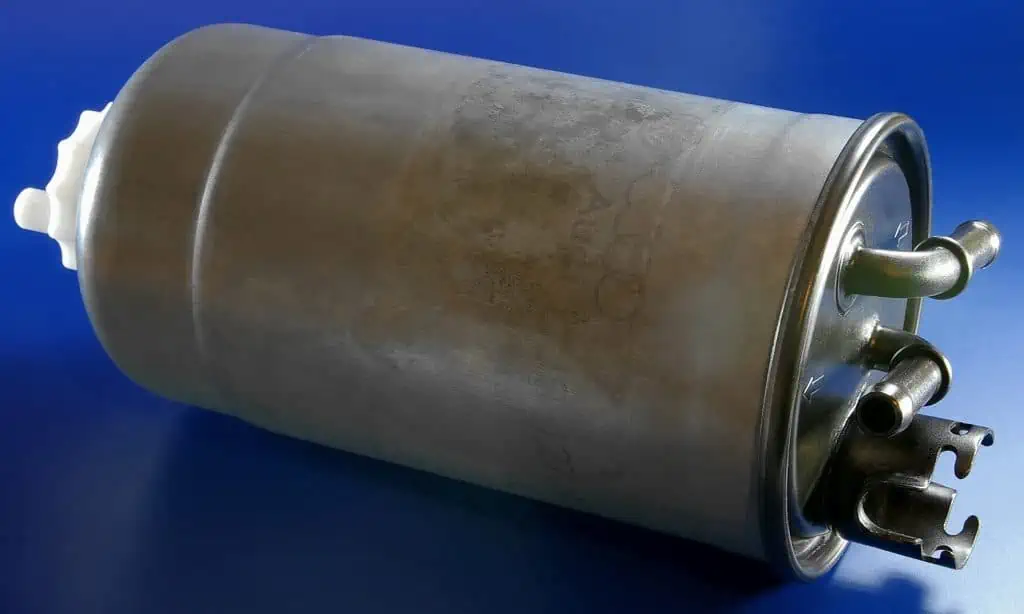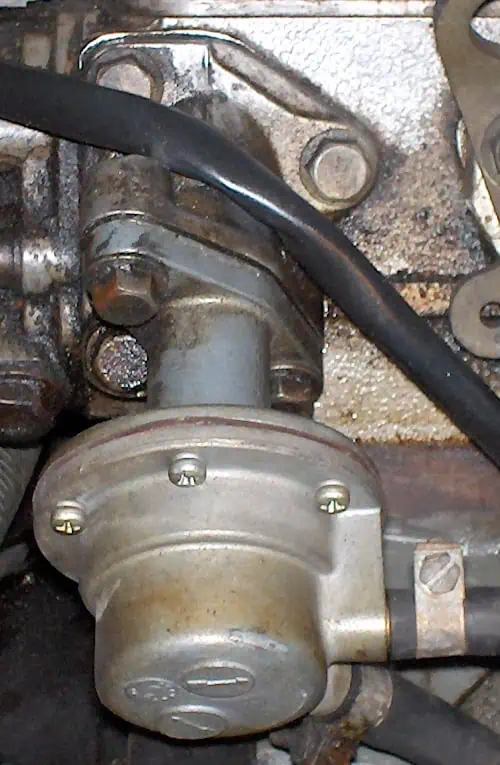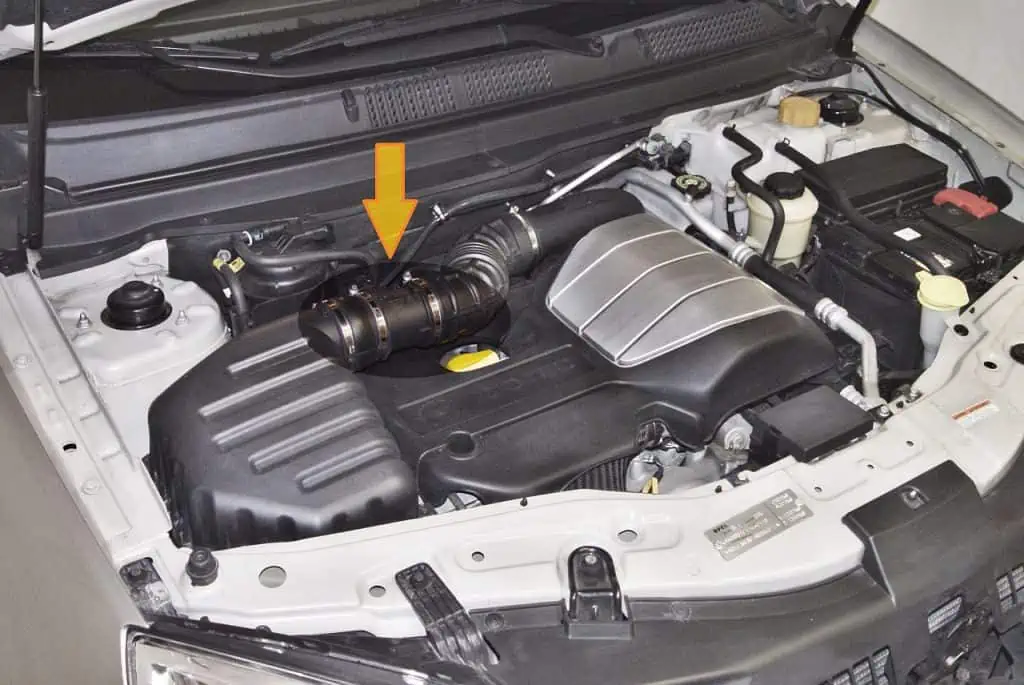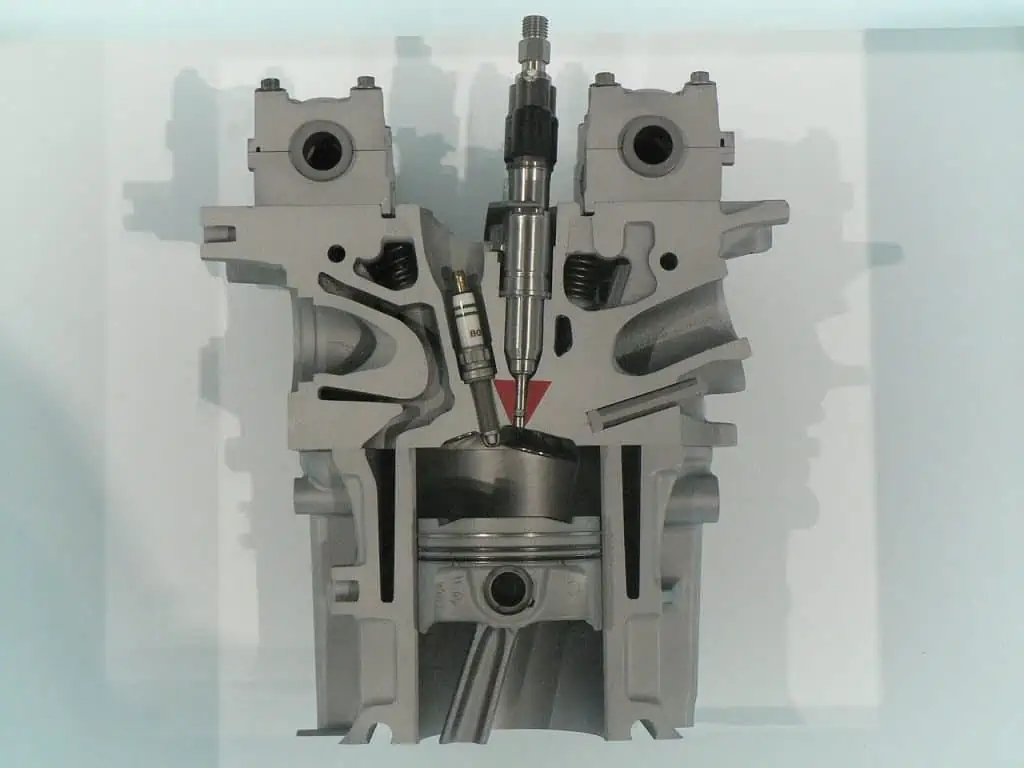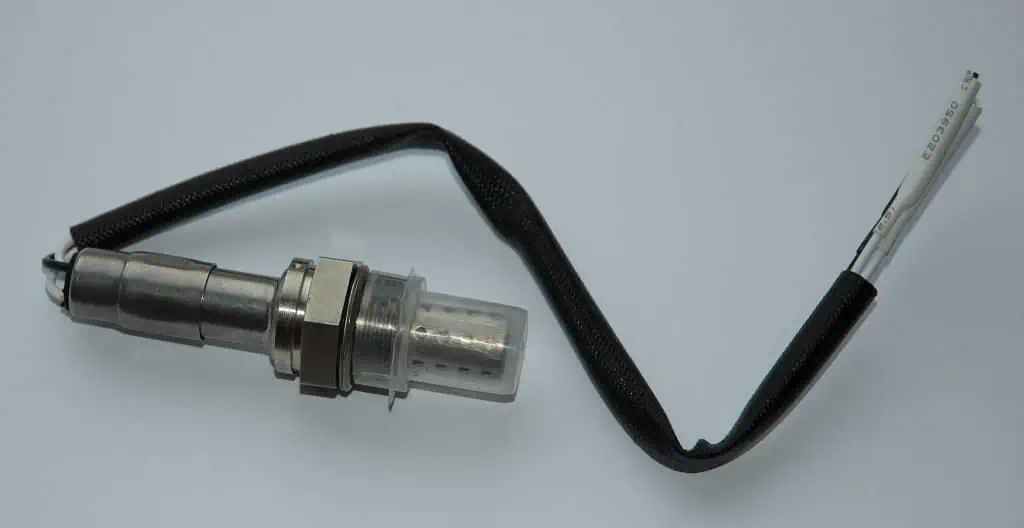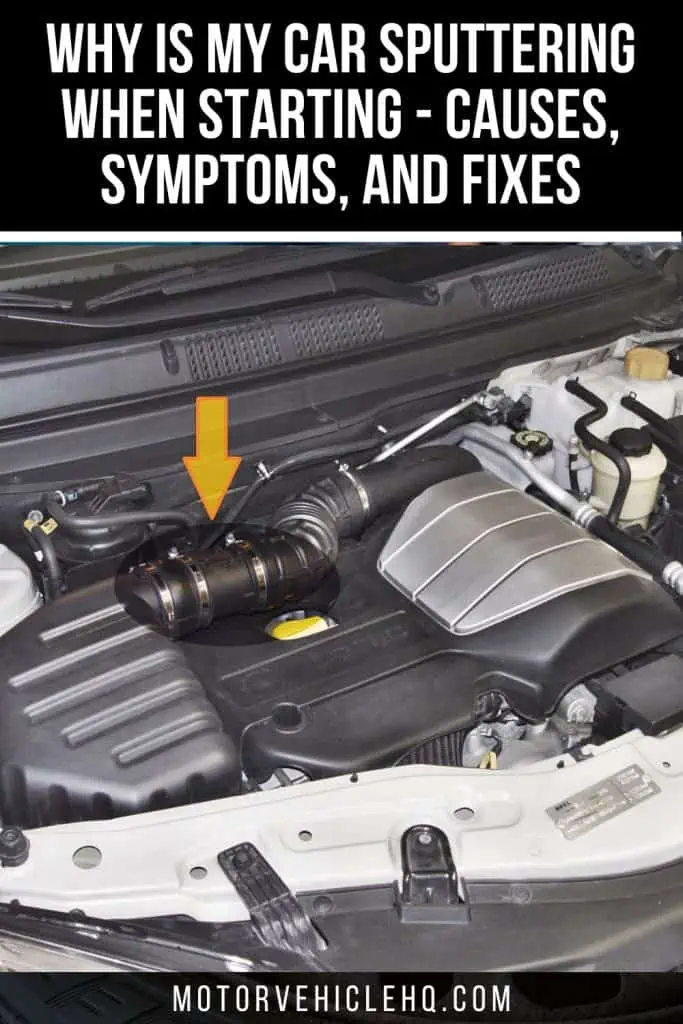Have you ever begun driving your car on a routine route and realized it wasn’t operating the way it usually does? At first, you might assume that your engine needs more fuel.
When you check to see if your tank is full, you are left perplexed. Your car’s engine could be the source of this issue. Your engine can start sputtering, which could cause more engine damage and high repair costs.
You are consequently having issues with the car sputtering when starting. Well, you are where you need to be. We’ll examine every potential cause of a car sputtering when it starts in this post, along with fixes.
There are many possible causes of car sputtering when starting issues, but after reading this article, you’ll know how to investigate them and what to do to resolve the issue.
The first thing to check for when your car’s engine sputters while you’re driving is low gas. On the other hand, if your gas gauge is full, it can indicate more serious engine problems. No fuel will be able to enter the combustion chamber if it clogs.
If the problem is not fixed right away, engine damage could happen. Continue reading to find out more about the causes of your car’s starting splutter.
Old and new spark plugs by Myke2020. To create the necessary ignition for the air/fuel mixture, spark plugs are required. But with time, plugs deteriorate and stop working as they should. There will be a lot of unburned fuel in this situation, which results in misfires and makes the car stutter while starting. To prevent issues like these, the spark plugs should be changed regularly according to a set schedule.
Which are the Most Frequent Reason for Car Sputtering When Starting?
Car sputtering while starting is most frequently caused by issues with the fuel system. This could be due to a problem with the fuel filter, pump, or injector. It might also be brought on by defective spark plugs or inadequately sparking ignition coils.
1. Lousy Spark Plugs
What do spark plugs do, though? Spark plugs are necessary to provide the necessary ignition for the air/fuel mixture. However, after time, plugs degrade and cease to function as intended.
In this scenario, there will be a lot of unburned gasoline, which leads to misfires and causes the car sputtering when starting. The spark plugs should be changed periodically at a predetermined schedule to avoid problems like these.
However, if you haven’t changed them already, you should do so soon because malfunctioning spark plugs might cause your engine to sputter (if you haven’t wondered how long spark plugs last, you might have to fork over a spark plug replacement cost).
Take out your spark plugs and physically inspect them; if they appear dirty and worn out, it could be time to replace them. Because they could be the cause of the same issues, the ignition coils should also be examined.
We’ve created separate guides on what a defective spark plug looks like and how to check the spark plugs so you can learn how to inspect your spark plugs. To prevent more wear and tear, try to do this as soon as you notice indications of a damaged spark plug.
2. A Clogged Fuel Filter
Before entering the engine and fuel injectors, the gasoline must be cleaned by the fuel filter. Fuel injector clogging or an engine with insufficient fuel pressure can both be caused by a clogged fuel filter.
Low fuel pressure may be the root of the car sputtering when starting issues because it causes the engine to operate very leanly. You must therefore be aware of the early signs of a malfunctioning fuel filter.
Regular replacement of the gasoline filter is recommended; if you didn’t do it at the most recent services, it may be time to do it now. Fuel filters are often affordable and straightforward to change. So, changing a normal fuel filter shouldn’t be too difficult for you.
3. A Faulty Fuel Pump
The fuel filter and the fuel pump belong to the same category. If the fuel pump breaks down, the fuel pressure will drop significantly, which could result in the engine running excessively lean.
The simplest approach to determine this is to mount a manual, temporary fuel pressure gauge on the gas pressure rail, and then check the gas pressure when the engine is started and revved.
A car’s fuel filter by Johann H. Addicks / CC BY-SA 3.0. The fuel filter is required to purify the gasoline before it can go into the engine and fuel injectors. A blocked fuel filter may result in clogged fuel injectors or an engine with insufficient fuel pressure. Low fuel pressure, which makes the engine run very lean, can be the source of problems with the car sputtering when it starts.
Your gasoline filter or the fuel pump is almost probably at blame if your fuel pressure is too low.
4. A Vacuum or Intake Leak
The automobile will splutter when starting as a result of an insufficiently lean mixture caused by an intake manifold leak.
The quickest approach to determine this is to use an EVAP smoke machine. Another technique to check for leaks is to listen for loud noises coming from the engine bay when the engine is starting, although it’s doubtful that you have one at home.
You can also spritz soap around the intake hoses to look for leaks. Once you’ve determined that there is a vacuum leak, you’ll need to think about how much it will cost to fix the leak.
5. Dirty or Damaged MAF Sensor
In the combustion chamber, the appropriate amount of fuel and air must be employed. In contemporary engines, an onboard computer keeps track of these parts. The mass air flow sensors ensure that the right volume of air is delivered to the combustion chambers.
When the sensors are inundated with dirt particles, they lose their ability to transmit precise data to the ECU. The engine control unit sprays the wrong quantity of fuel into the cylinders, which leads to the car sputtering when starting issues.
You can clean the mass airflow sensor by carefully removing it and using an electronic cleaner to clean it. To be sure, you could use an OBD scanner to identify a faulty MAF sensor. Look for error codes like P0102, P0101, or P1101.
6. Clogged Fuel Injectors
The purpose of the fuel injectors is to inject fuel into the combustion chamber of each cylinder. After combining it with air, the spark plugs ignite this.
If the fuel filter is not operating as it should, little filters inside the fuel injectors may clog.
Fuel injectors that spray too little fuel into the combustion chamber may be the cause of the car sputtering when starting and the cylinder misfiring. When fuel injectors are unclean, this is what occurs. Or do you have signs of a faulty fuel injector?
These little filters are replaceable, so any workshop should be able to do it for you.
Carbon deposits will be dissolved by the detergents in over-the-counter fuel injector cleaners. However, it is advisable to utilize these products before any serious injector issues arise.
A mechanical fuel pump by Sonett72. The fuel filter and fuel pump are included in the same group. Fuel pressure will drop dramatically if the fuel pump malfunctions, which could cause the engine to run too low. Installing a manual, temporary fuel pressure gauge on the gas pressure rail and checking the gas pressure when the engine is starting and revved are the simplest ways to find out.
7. Catalytic Converter Failure
To purge harmful gases from the exhaust, the catalytic converter is necessary. The exhaust pipe may become blocked if the catalytic converter is too old and becomes clogged with lost internal pieces. So, watch out for the symptoms of a blocked catalytic converter or the signs of a malfunctioning catalytic converter.
As a result, your engine will encounter too much backpressure, which will result in the car sputtering when starting problems.
Using a cleaner for catalytic converters, you could try to clean the catalytic converter.
When the catalytic converter isn’t working properly, you’ll notice a distinct smell of rotten eggs.
8. Clogged Oxygen Sensors
The majority of automobiles contain an engine component monitoring computer system. This will perform its calculations, which is quite helpful. The oxygen sensors in this system aid in tracking fuel control. If your oxygen sensors stop functioning properly, your combustion chambers will either have too much fuel or not enough fuel.
This poses a challenge because the combustion chambers can only hold a certain amount of fuel and air at any given time. These oxygen sensors quit functioning as a result of dirt particles accumulating inside of them. When this occurs, they become unreliable. To avoid this issue, it is usually a good idea to periodically replace these sensors.
9. A Leaking Exhaust System
Only the combination of air and gasoline ignition powers the engine. The engine won’t run if this combination isn’t ignited. Exhaust gases are produced and move through the manifold when the mixture ignites. Eventually, these gases reach the atmosphere.
Catalytic converters are employed to make sure these gases are safe. This is essential for purging these gases of dangerous chemicals. Carbon monoxide and hydrogen monoxide are two hazardous substances.
The gases are transformed into less dangerous gases if the catalytic converter performs its function correctly. This is crucial to prevent the release of hazardous gases into the environment. These gases will now begin to flow when there is an exhaust system leak before the hazardous components are eliminated.
MAF sensor in a diesel engine by Antonín Ryska / CC BY-SA 4.0. The right amount of fuel and air must be used in the combustion chamber. These components are tracked by an onboard computer in modern engines. The proper amount of air is provided to the combustion chambers thanks to the mass air flow sensors. The sensors’ capacity to communicate exact data to the ECU is compromised when they are covered in dirt particles.
This is detrimental and will cause a sputtering sound to develop. The heated gases may start melting the components of the car engine, for example, which can cause some major issues. The cost of fixing this may be high.
10. Faulty Gaskets
A gasket’s function is to stop oil and exhaust gases from entering the combustion chambers. A gasket’s function is to stop oil and exhaust gases from entering the combustion chambers. You will hear your engine sputtering if the oil begins to leak into the combustion chamber.
If this isn’t rectified right away, you’ll eventually completely ruin the exhaust. Any gaskets that are leaking should be changed right away. You risk causing engine harm if they aren’t.
11. A Bad Battery
Your battery can be the first area of concern. The engine may sputter at first before starting if the battery is barely charged enough to start the automobile.
It might even out since once the engine is running, it doesn’t need as much juice from the battery. Additionally, once the engine is going, the alternator begins to charge the battery.
If a weak battery was the cause of the sputtering, it will likely only occur once because the battery will be recharged after driving. However, if the battery cannot maintain a charge, the automobile may continue to sputter when you start it.
Before starting the car, turn on the headlights to check the battery’s strength; if they are faint, the battery is weak. Test the battery to determine whether you need a new one or try charging it with the right maintainer. If the battery needs to be replaced, the sputtering will stop.
12. Failure of the Ignition Switch
The defective ignition switch is the final potential issue we’ll examine. If the switch isn’t functioning properly, it might not be telling the engine to turn over completely.
The insufficient charge being applied can cause the car sputtering when starting. But if it’s the ignition switch, the car will probably not start at all, so this is one of the final things to examine.
How Can You Diagnose Problems Relating to Car Sputtering When Starting?
When your engine sputters, there usually is a bigger issue at play. Get this issued check out right away to prevent any more problems.
It’s crucial to remember that a gas-starved engine will splutter. To find out how much fuel you have left, check your gas gauge. If your gas gauge is full, your engine likely has a more serious issue.
Internal parts of a fuel injector by Ton1~commonswiki / CC BY-SA 3.0. The fuel injectors’ main function is to inject fuel into each cylinder’s combustion chamber. The spark plugs ignite it after mixing it with air. Little filters inside the fuel injectors may clog if the fuel filter is not functioning properly. The car may sputter while starting and the cylinders may misfire if the fuel injectors spray insufficient gasoline into the combustion chamber.
You could believe that a sputtering engine is not a serious problem. The issue is that engine sputtering is a sign of a more serious issue inside the engine.
You must treat this issue seriously and identify its fundamental cause because it won’t go away on its own. If you ignore this problem for too long, you’ll eventually need to make a more costly repair.
There are two typical systems that you ought to examine. They are the fuel system and the exhaust. Exhaust gases are collected by the exhaust system. The hazardous components of the gases are removed using this technology to prevent environmental leaking.
Carbon monoxide and hydrogen monoxide are among the dangerous chemicals. Because these fumes are so dangerous, the exhaust system must function.
The vehicle’s fuel is stored and delivered by the fuel system. This enables the engine to function and the automobile to move. It is clear how crucial this system is. Your automobile won’t start if something doesn’t function properly.
You must investigate all potential reasons of an engine sputter to address them as quickly as feasible. If you damage your engine, it would be incredibly expensive to replace it.
What are You Likely to Arrive at Following the Diagnosis?
If you choose to have your automobile serviced by a mechanic, they will examine all of your systems to identify the source of the issue. They will examine the airflow sensors, oxygen sensors, exhaust manifolds, and exhaust gaskets.
A skilled professional should constantly examine these systems because they are more efficient and know what to look for.
Keep in mind that you must identify the issue to repair your car as quickly as feasible. Driving your automobile further will just make the engine damage worse.
A mechanic will be able to provide you with cost estimates and a plan of action once they have identified the issue. When you ask how long the repair will take, they will answer.
This will enable you to budget and provide you with a timetable for how long you won’t have access to your car. It is usually wise to pay for a professional’s opinion when your engine is involved. Long-term financial savings will result from this.
How Do I Fix Problems Relating to Car Sputtering When Starting?
As you can see, a car engine that sputters can have several different causes. It’s crucial to have a qualified mechanic look at the concerns, even though the problem could be caused by a variety of problems.
Check out the methods listed below to determine if you can complete a do-it-yourself cure for your automobile sputtering problem.
An exhaust catalytic converter by The RedBurn / CC BY-SA 3.0. The catalytic converter is required to remove hazardous pollutants from the exhaust. If the catalytic converter is too old and becomes clogged with lost internal bits, the exhaust pipe may become obstructed. So keep an eye out for the signals of a blocked catalytic converter or a catalytic converter that isn’t working properly. Your engine will consequently experience excessive back pressure, which will cause the car to splutter while starting issues.
1. A Secondary Ignition System Inspection
You should first give your secondary ignition system some thought. On the spark plug wires in your car, be sure to look for burned or broken insulation. Take a glance at each wire to check for broken conductors.
The faulty spark plug wire in your car will keep a powerful spark from reaching the cylinder. Check your spark plugs by removing them. Inspect the electrodes or plugs for damage, wear, and foulness. Your distributor cap and rotor should be found. Both must be devoid of fractures and carbon stains.
2. Examine the Ignition Coil
Using an ohmmeter to measure the ignition coil’s resistance is an additional step in eliminating engine sputtering. That coil might need to be replaced if it is burnt out.
3. Examine the Fuel Injectors
Take a look at the fuel injectors in your car. Start your engine while using your mechanic’s stethoscope. Next, as the engine begins, carefully listen to each fuel injector.
As each fuel injector closes and opens, listen for the clicking noise it makes. If you don’t hear the clicking, your injector might malfunction. It’s time to schedule service with a mechanic.
4. Examine the Spray Pattern
Next, you should inspect your engine and the throttle body injector’s fuel spray pattern. Examine the spray after removing the air intake assembly.
This spray ought to be uniform and have a V-shaped pattern that is only partially atomized. You have a broken injector if the spray pattern is uneven or asymmetrical.
5. Check the Vacuum Hoses
The condition of your vacuum hoses should then be checked. Make sure to look for hoses that are loose, broken, collapsed, or even torn. Engine performance is impacted by vacuum leaks. Vacuum hoses should be changed as needed.
6. Air and Fuel Filters Must Also Be Replaced
Next, you should inspect your fuel and air filters and swap out any that are cracked or broken. Engine performance will be hampered by clogged or dirty fuel or air filters.
If Your Car Sputters and Dies, What Does That Mean?
It’s possible that your engine isn’t getting enough fuel. Your engine can start normally before stalling out once you give your automobile some gas. As soon as you turn on your engine, take some time to check the fuel pressure. As you give your car gas, be careful to keep an eye on the pressure.
A three-wire oxygen sensor by Mnemo / CC BY-SA 3.0. This system’s oxygen sensors assist in monitoring fuel control. You will either have too much fuel or not enough fuel in your combustion chambers if your oxygen sensors cease working properly. Due to the limited capacity of the combustion chambers to store both fuel and air at once, this presents a problem. The dirt that builds up inside these oxygen sensors causes them to stop working. When this happens, they lose their dependability.
If the pressure lowers, either the fuel pressure regulator or the gasoline pump may malfunction. Check to see if the gasoline pump is on and functioning. The fuel pressure relay should then be checked to see if it is heating up. It will turn off if it doesn’t become hot.
If your fuel pump is operational and running, check your fuel pressure regulator to see if it is receiving power. If your fuel pressure regulator isn’t receiving enough power, you should turn off the engine and inspect the wiring.
Check the wiring of the OHMS to see if there is any kind of fracture. When the meter reads “OL,” the wiring needs to be fixed because there is a break in the wiring. Next, take a look at your fuse box and check for any burned or damaged fuses that might be keeping the fuel system from operating.
When you try to diagnose the source of your engine sputtering on your own, your mechanic can help.
The Conclusion
There are a lot of potential causes for car sputtering when starting, which can be frustrating. Fortunately, most repairs are inexpensive and won’t require you to buy a new vehicle.
Simply check the engine code to determine the issue, then replace or repair the defective component. While frustrating, a car that sputters while starting is a rather simple problem to remedy, so you won’t have to miss work.
Just make sure to take care of it as soon as you can because a sputtering car wastes petrol and can leak dangerous gas into your car. Fortunately, you now have all the information you require regarding your car sputtering when starting.
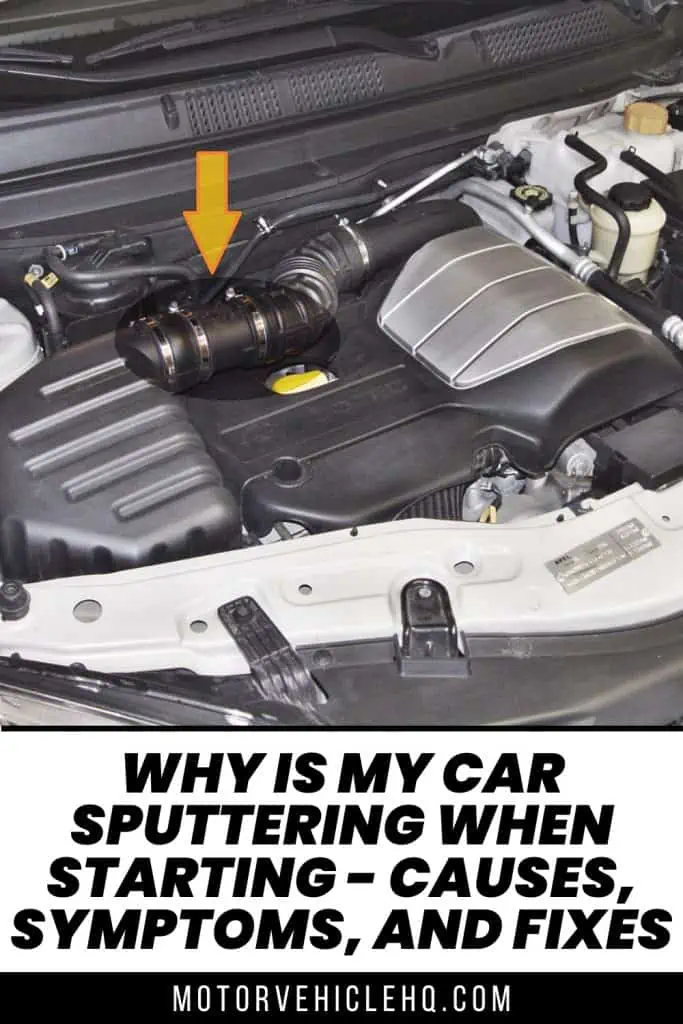
MAF sensor in a diesel engine by Antonín Ryska / CC BY-SA 4.0

Jim Wicks is the founder of MotorVehicleHQ. With over two decades of experience in the automotive industry and a degree in Automotive Technology, Jim is a certified car expert who has worked in various roles ranging from a mechanic, car dealership manager, to a racing car driver. He has owned more than 20 cars over the past 15 years. Ask him about any vehicle you see on the road and he can tell you the make, model and year. He loves the aesthetics of all things cars, and keeps his vehicles in pristine condition.
In his free time, Jim enjoys getting his hands dirty under the hood of a classic car or taking long drives along the country roads. His favorite car? A 1967 Shelby GT500, a true classic that, according to Jim, “represents the pure essence of American muscle.”
